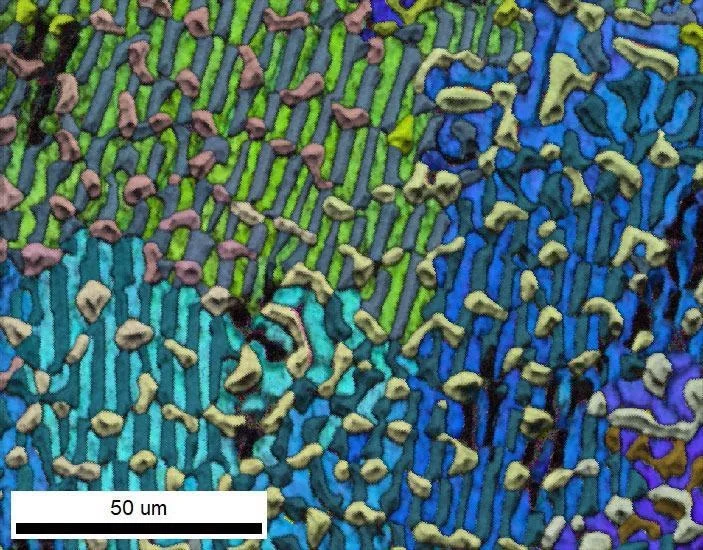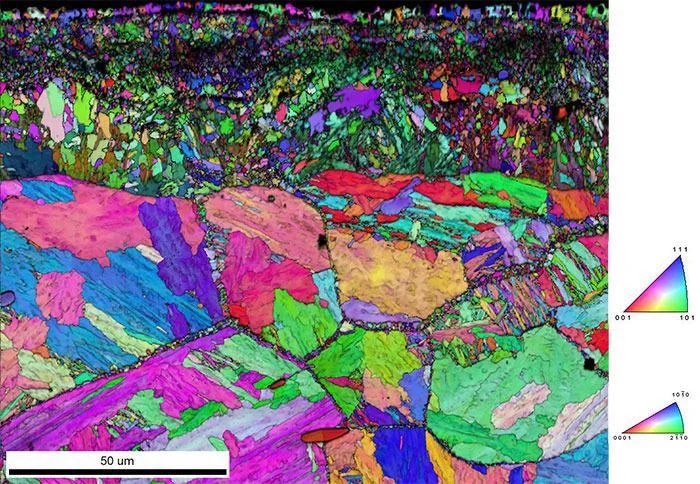Pegasus is a renowned materials characterization system that combines elemental composition and crystallographic orientation information into one user-friendly package.
The user-friendly APEX™ software combines advanced analytics energy dispersive x-ray spectroscopy-electron backscatter diffraction (EDS-EBSD) algorithms to quickly, conveniently, and reliably collect and present high-quality data.
When utilized with EDAX detectors, APEX boosts user productivity and provides the ideal option for simultaneous EDS–EBSD microstructural analysis.
Integrated EDS–EBSD
- The ChI-Scan™ function combines EDS compositional data with EBSD crystallographic data to enhance phase mapping and EBSD indexing.
- Sophisticated EDS quantification with optimization is employed to handle high-tilt EBSD geometries.
- Collects structural and crystallographic data using a fully integrated EDS-EBSD system.

EBSD Image Quality and IPF Orientation Map of an Al-Cu-Mg alloy were simultaneously collected then shown as a combined EDS–EBSD dataset. Image Credit: Gatan
Features and benefits
High throughput 3D EDS–EBSD
- The Octane Elite and Octane Elect EDS Detectors, as well as Velocity™ EBSD Detectors, provide the fastest acquisition of any integrated EDS–EBSD system.
- All EDS detectors use the highest transmissivity Si3N4 window to enhance signal during low-dose and low-kV operation.
- The EBSD Confidence Index value gives a quantifiable quality evaluation for the crystallographic indexing solution.
Direct detection EBSD
- Clarity™, the ultimate EBSD detector series, uses direct detection technology to ensure unmatched performance in low dose and low kV analytical settings.

EBSD Image Quality and IPF Orientation map of a nitrided surface of a steel sample where combined EDS–EBSD information was used to differentiate similar crystallographic phases. Image Credit: Gatan
Conclusion
Pegasus Systems can be used to address both common and complex material characterization problems. Pegasus delivers both elemental and crystallographic findings quickly and easily, allowing users to focus their efforts on understanding their materials rather than on the process of data collection.
